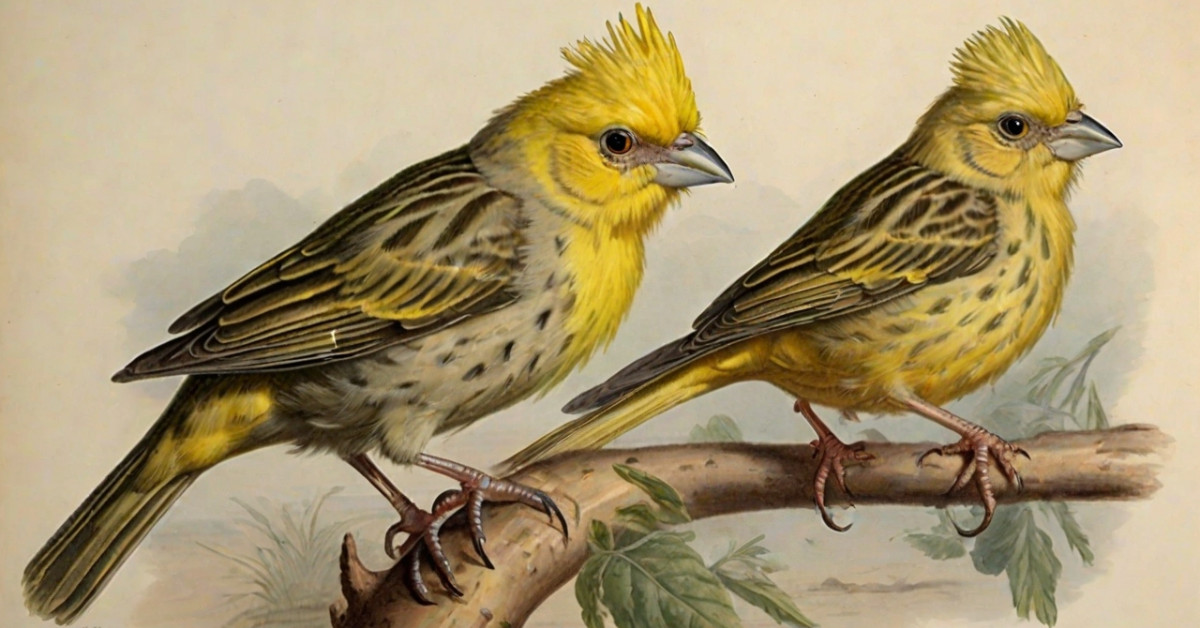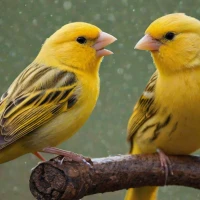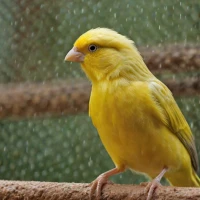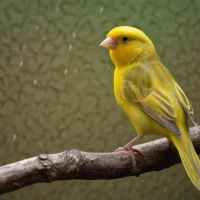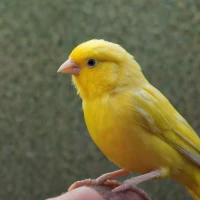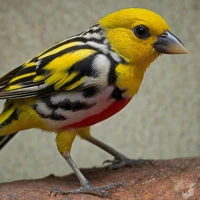A Love Affair with Crested Canaries
Let me tell ya’ll a little story. I first fell in love with these whimsical little beauties about ten years ago. I was visiting a friend, a fellow bird enthusiast, who had just gotten a pair of Crested Canaries. The sight of those unmistakable tufted crests, perched gracefully atop their heads, just blew me away. It was love at first sight. Ever since then, I’ve been something of a Crested Canary nut. They’re not just any old canaries; they’re special—each one a tiny, feathery masterpiece.
Evolution and Origin: The Birth of Elegance
Okay, so let’s dive a bit into the history and evolution of these marvels. The Crested Canary has a fascinating heritage stretching back to about 18th-century Europe. They’re essentially an offshoot of the common canary but with a genetic mutation that causes a tuft of feathers, or a “crest,” to form on their heads. These canaries were selectively bred for this unique feature, and over the years, they’ve become incredibly popular among bird enthusiasts.
You know, it’s funny—folks often assume that Crested Canaries are a completely separate species. But nope! They’re very much part of the Serinus canaria family. This little nugget of information often leaves people gobsmacked!
Characteristics That Will Make Your Heart Sing
Have you ever heard a canary sing? If not, you’re missing out! Crested Canaries sing their hearts out with songs that can brighten up even the gloomiest of days. Their crests add an extra flair, making them look almost regal. The contrast between their vibrant bodies and the unique feather formations can be quite the spectacle. It’s like watching a tiny feathered king or queen holding court.
Their plumage comes in a variety of colors—yellow, white, red, and even frosted shades. Each hue adds its own charm. Trust me, seeing a Crested Canary for the first time is like finding a rainbow after a storm 🌈.
Can You Keep One? Absolutely!
So, you’re probably wondering if you can keep a Crested Canary at home. The answer is a resounding yes! These birds are relatively easy to care for, but they do require a bit of attention to detail—think of it as the price you pay for their splendid companionship.
Firstly, make sure they have a spacious cage. These canaries love to stretch their wings, and a cramped environment will make them downright miserable. Feed them seeds, fresh veggies, and fruits. Oh, and don’t forget to provide a cuttlebone for their beak health.
Clean water is essential. Always. A little trick I learned from my grandma is to add a few drops of apple cider vinegar to their water once a week—it helps keep their systems in check.
The Importance of Social Interaction
One thing that often surprises people is how social these little birds can be. If you’re going to get a Crested Canary, consider getting a pair. They thrive on interaction. Watching two canaries play, preen each other, and sing in perfect harmony is pure joy. I’ve got to admit, sometimes, I end up spending hours just observing them. They have these little, almost human-like quirks that are just endearing.
The Challenges: Not All Sunshine and Rainbows
Of course, like with anything worth having, there are challenges. One of the main things to watch out for is mite infestation. These little critters can cause havoc if not dealt with promptly. Regularly check your canary’s plumage and beak for any signs of mites. Picking up a good mite spray and using it as a preventative measure is a smart move.
Another potential issue? Their crests! Sometimes, the crests can obscure their vision, making them a bit clumsy. You might have to give their tufts a little trim every now and then. It’s kinda like how we have to cut our bangs when they get too long.
Breeding Crested Canaries: No Easy Feat
Alright, for those of you adventurous souls looking to breed Crested Canaries, here’s some real talk: it ain’t easy. You’ll need to consider various factors, including pairing healthy birds with strong genetic lines. Breeding Crested Canaries isn’t just about mating any two birds; you’ve got to be selective to ensure the trait is passed on beautifully.
Another thing—don’t pair two cresteds together. It often results in chicks with too much tufting, leading to health problems. Instead, pair a crested bird with a plain-headed one.
The Unique Soundtrack of Your Home
Crested Canaries have a way of making your home feel alive. Their songs are more than just random cheeps and chirps. They have depth, melody, and a certain je ne sais quoi that turns a silent room into a concert hall. Ever tried listening to your favorite podcast or music while your canary sings along in the background? It’s surreal and almost magical.
My Little Companions
You know, just last summer, I was having a rough go—work stress, family dynamics, you name it. But each evening, I’d come home to my crested pair, Olive and Pippin. Just seeing them interact, hearing them sing with that heartfelt exuberance, helped lift my spirits. They became my therapists, confidants, and evening entertainers. If that’s not a testament to the incredible value of having Crested Canaries, I don’t know what is.
Creating the Perfect Environment
So, how do you create a perfect environment for your Crested Canaries? Well, think of it like setting up a 5-star hotel for your feathered friends. Start with a roomy cage—the kind where they can flutter around happily. Add some perches at varying heights and maybe a swing or two. They love swinging around; it’s like their version of a rollercoaster.
Lighting plays a huge part, too. Natural sunlight is ideal, but not too much. You don’t want them roasting in their own feathers. Position the cage where it gets some sun but also has shaded areas.
Common Health Issues and Remedies
Yep, even our little songbirds can fall ill sometimes. Respiratory issues are a big concern, usually due to poor air quality or drastic temperature changes. Keep the air around them clean and free from strong odors. A small air purifier near the cage can work wonders.
Molting is another thing. It’s normal but can be stressful for the bird. During molting season, up their nutrient intake with supplements and extra greens. It’s like hitting the reset button for their feathers.
Lifespan and Farewell
No one likes to think about saying goodbye, but it’s part of the journey. Crested Canaries can live up to 10-15 years with good care. They become part of your life, a feathered fixture of your everyday routine. When they eventually pass, it’s like losing a little piece of your heart. But the joy and memories they leave behind—those are priceless.
Why I Can’t Quit Them
I think what I love most about these canaries is their resilience and flair. Despite their small size, they’re full of personality and pizzazz. They remind me that beauty comes in all shapes and sizes, and sometimes, the tiniest creatures can leave the biggest impressions on our hearts. 🌟
Random Fact: Canary Islands and Canaries
Did you know that the Canary Islands are not actually named after the canary bird? Instead, they’re named after dogs (think ‘canine’). The birds, in fact, got their name from the islands. It’s wild how these connections happen, right?
Personal Reflection: A Song of Life
Overall, having Crested Canaries has been one of the most fulfilling experiences of my life. Their songs, their antics, their very presence has filled my home with so much warmth and joy. If you’re contemplating adding a bird to your life, you won’t go wrong with a Crested Canary. Give them love and care, and they’ll give you a lifetime of melodious memories.
Thanks for hanging out and reading my ode to these little marvels. Remember, life is better with a song in your heart and a bird on your perch! 🎶
May your days be chirp-tastic!
